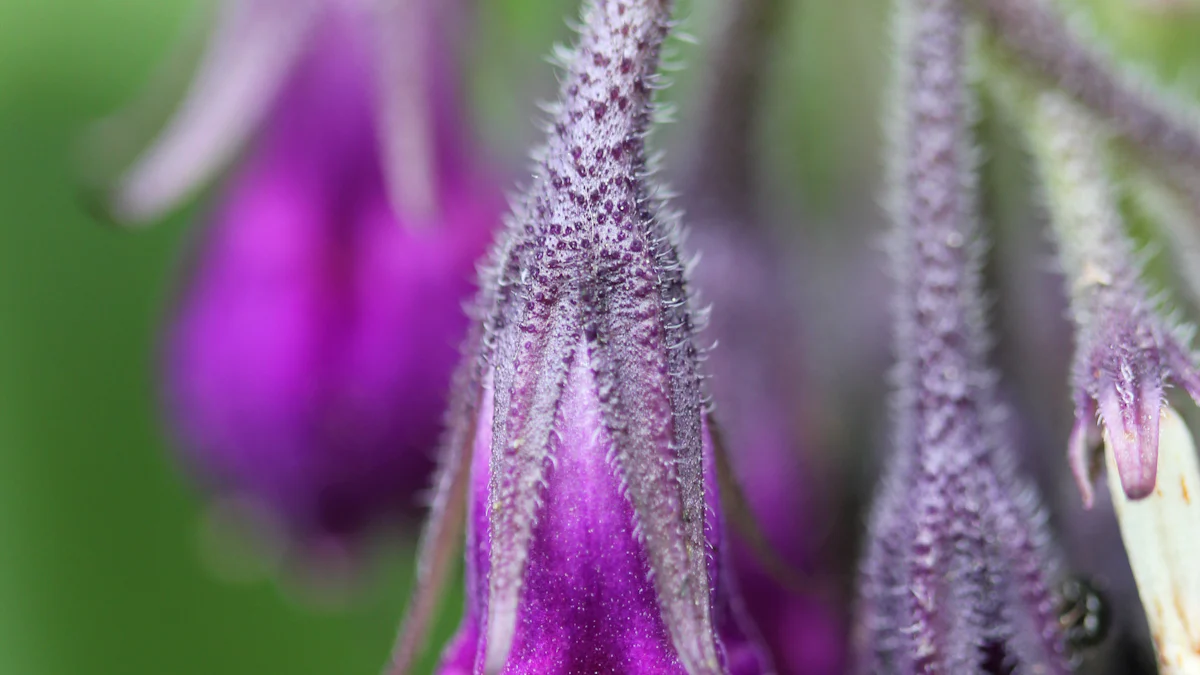Growing Comfrey Seeds: A Guide to Germination and Growth

Introduction
Growing comfrey from seeds can be a rewarding experience for gardening enthusiasts and herbalists alike. This guide will provide you with valuable insights into the germination and growth process of comfrey plants. Comfrey seeds typically take around 10-14 days to germinate, and with proper care, the plants can reach maturity in just 3-4 months. However, several factors can influence the growth of comfrey, including temperature, soil quality, and watering practices. By understanding these factors and creating optimal growing conditions, you can ensure successful cultivation of comfrey plants. So let's dive in and explore the fascinating journey of growing comfrey from seeds!
Creating Optimal Growing Conditions
To ensure the successful growth of comfrey plants, it is essential to create optimal growing conditions. Two key factors that significantly impact comfrey growth are temperature and light, as well as soil preparation.
Temperature and Light
Comfrey thrives in moderate temperatures, ideally ranging between 60°F to 75°F (15°C to 24°C). It is important to provide adequate sunlight or shade depending on your climate. In regions with hot summers, providing partial shade during the hottest part of the day can prevent the plants from wilting or drying out. On the other hand, in cooler climates, placing comfrey in a sunny spot can promote healthy growth and robust foliage.
Soil Preparation
Choosing the right soil for comfrey is crucial for its development. Opt for well-draining soil that allows excess water to flow away easily. Comfrey prefers slightly acidic to neutral soil with a pH level between 6.0 and 7.0. To improve soil fertility and nutrient content, incorporate organic matter such as compost or well-rotted manure into the planting area before sowing the seeds. This will provide essential nutrients for healthy root development and overall plant growth.
By creating optimal growing conditions through proper temperature management and soil preparation, you can lay a solid foundation for your comfrey plants' success. These steps will help ensure that your comfrey plants have the best possible environment to thrive and reach their full potential.
Germinating Comfrey Seeds
Germinating comfrey seeds is the first step in successfully growing these plants. Proper seed preparation and sowing techniques are essential for ensuring good germination rates and healthy plant development.
Seed Preparation
Comfrey seeds have a hard outer shell that can inhibit germination. To overcome this, you can scarify the seeds by gently nicking or scratching the surface with a file or sandpaper. This process helps water penetrate the seed coat, promoting quicker germination. Another method is soaking the seeds in warm water for 24 hours before planting. This softens the seed coat and encourages faster sprouting.
Sowing and Watering
When sowing comfrey seeds, it's important to plant them at the proper depth. Aim for a depth of about 1/4 inch (6 mm) in well-prepared soil. Space the seeds around 12-18 inches (30-45 cm) apart to allow sufficient room for growth.
Watering plays a crucial role in germination success. Keep the soil consistently moist but not overly saturated during the germination period, which typically takes around 10-14 days. Avoid letting the soil dry out completely, as this can hinder seed sprouting. Consider using a misting spray or gentle watering technique to maintain moisture without disturbing the seeds.
By following these steps for seed preparation, sowing at the right depth, and providing adequate moisture, you can increase your chances of successful comfrey seed germination. Patience and proper care during this initial stage will set your comfrey plants on a path towards healthy growth and development.
Nurturing Comfrey Plants
Once your comfrey plants have germinated and started to grow, it's important to provide them with proper care and attention. This includes fertilization, mulching, pruning, and knowing when to harvest.
Fertilization and Mulching
To promote healthy growth, consider applying a balanced fertilizer to your comfrey plants. A slow-release organic fertilizer or compost can provide the necessary nutrients for optimal development. Apply the fertilizer according to the manufacturer's instructions, taking care not to over-fertilize as this can lead to excessive foliage growth at the expense of root development.
Mulching around comfrey plants offers several benefits. It helps retain moisture in the soil, suppresses weed growth, and provides insulation during extreme temperatures. Organic materials like straw or wood chips make excellent mulch options. Apply a layer of mulch around the base of the plants while avoiding direct contact with the stems.
Pruning and Harvesting
Pruning comfrey plants is beneficial for encouraging bushier growth and preventing them from becoming too leggy. Trim back any damaged or wilted leaves regularly throughout the growing season. This will stimulate new growth and maintain a tidy appearance.
When it comes to harvesting comfrey leaves and roots, timing is crucial. For leaves, wait until they reach their maximum size before cutting them back by about two-thirds of their length. This allows the plant to continue growing while providing you with fresh leaves for various uses such as composting or making herbal infusions. As for harvesting roots, it's best done in late fall or early spring when they are most potent.
By nurturing your comfrey plants through proper fertilization, mulching, pruning, and timely harvesting practices, you can ensure their continued health and productivity in your garden or herbal practices.
Conclusion
Growing comfrey from seeds can be a truly rewarding process for gardening enthusiasts and herbalists. By providing optimal growing conditions, including the right temperature, light, and well-prepared soil, you can ensure successful germination and growth. Nurturing your comfrey plants through proper fertilization, mulching, pruning, and timely harvesting will contribute to their overall health and productivity. Whether you use comfrey in your garden for its beautiful foliage or in herbal practices for its medicinal properties, the benefits of growing comfrey are abundant. Embrace this journey and enjoy the wonders that comfrey brings to your garden or herbal endeavors.



